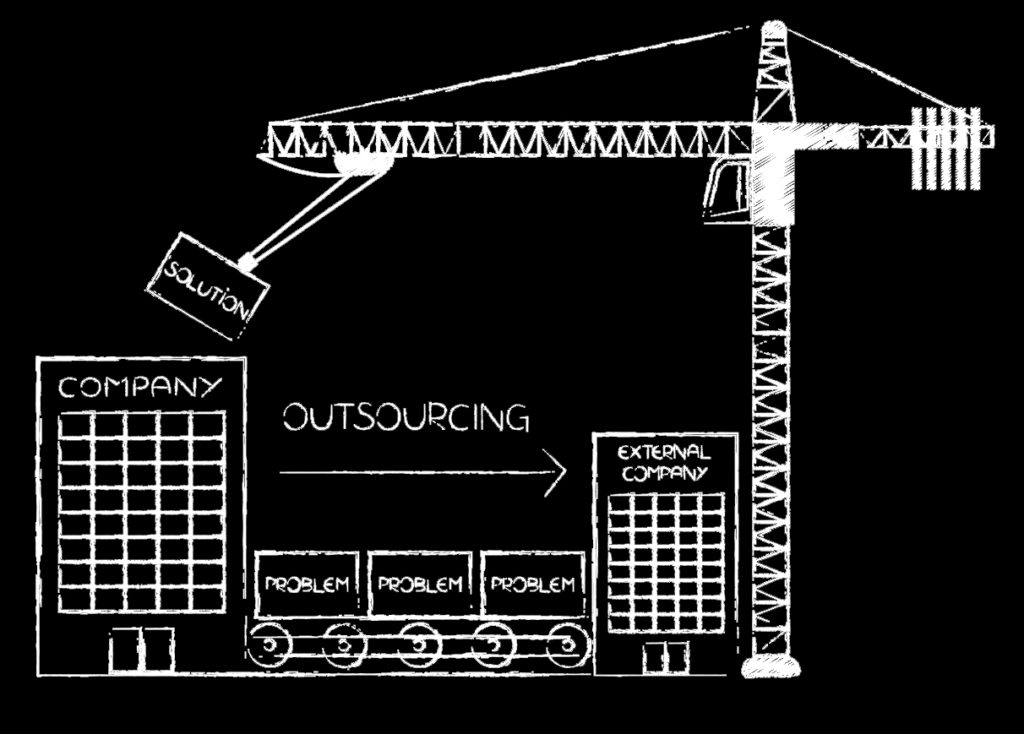Outsourcing is the solution that modern economics has found to reduce the direct costs, risks, investment expenses, and give firms more flexibility, through contracting out certain tasks.

The practice, which began in the United States in the early Sixties, is now widespread even in Italian companies, both public and private.
The matter is complex and beyond the scope of our expertise, but we wanted to draw two general conclusions:
- Outsourcing does not necessarily mean offshoring. In these cases, the benefit of subcontracting is incremented – but also polluted – by the exploitation of cheap labor and by the more permissive legislation in the field of environmental protection and safety at work of countries in the developing world.
- Outsourcing is more effective and less “annoying” when applied to a B2B process (Business to Business) and also relates to the outsourcing of intellectual processes (knowledge process outsourcing KPO) instead of outsourcing best practice processes (BPO) side to consumers and individual customers. It may seem to narrow the field, but not when you consider that in each case the volume of B2B transactions is much higher than that of B2C transactions (Business to Costumer).
Outsourcing and architecture
We like to think of the architect as a craftsman, a thinker, an intellectual worker, but the construction industry is vast and complex and the architect is just one of the many actors.
There are some specific phenomena, in our opinion, that cast the architect away from the craft of design:
- Architecture involves heritage, land, landscape and the environment; it cannot be separated from related disciplines such as urban planning and engineering. All these issues are governed by complex rules (particularly complex in Italy), which require much dedication and sometimes have nothing to do with the architecture itself. This leads to the production of a large number of documents, whose redaction is often tedious and of little intrinsic value.
- The project, of central instrument the building process, is developed by computer support, especially by CAD, and increasingly by BIM. As in other fields, this tool has revolutionized the construction world. In our opinion, however, what reversed the action of designing (I think and then I see) was the ability to change with little apparent effort, and for an infinite number of times, the object of the building: revision has become the rule. In the pre-computer era, before visualizing a project you had to go through several verification steps: the revision was seen as a “correction” and was considered as a potential, yet not desirable practice, as it implied loss of time and money. Today it is exactly the opposite. Remember those revision tags placed at the bottom right of the drawing, just above the title block? They are disappearing, simply because they cannot keep up with the same revisions they should list and describe. The other culprit of the phenomenon of “endless revision” is practically “infinite availability” of multiple technical solutions and materials that must be researched, checked, compared, and finally selected.
This is the world of the outsourcer in the field of architecture and construction,responsible for filling in boring documentation required by increasingly stricter legislation, the auditor of designs already underway or completed. Collettivo 4 Outsourcing should be considered as a specialist in the business “neglected” by the client-architect, who can return to his main business: design.
